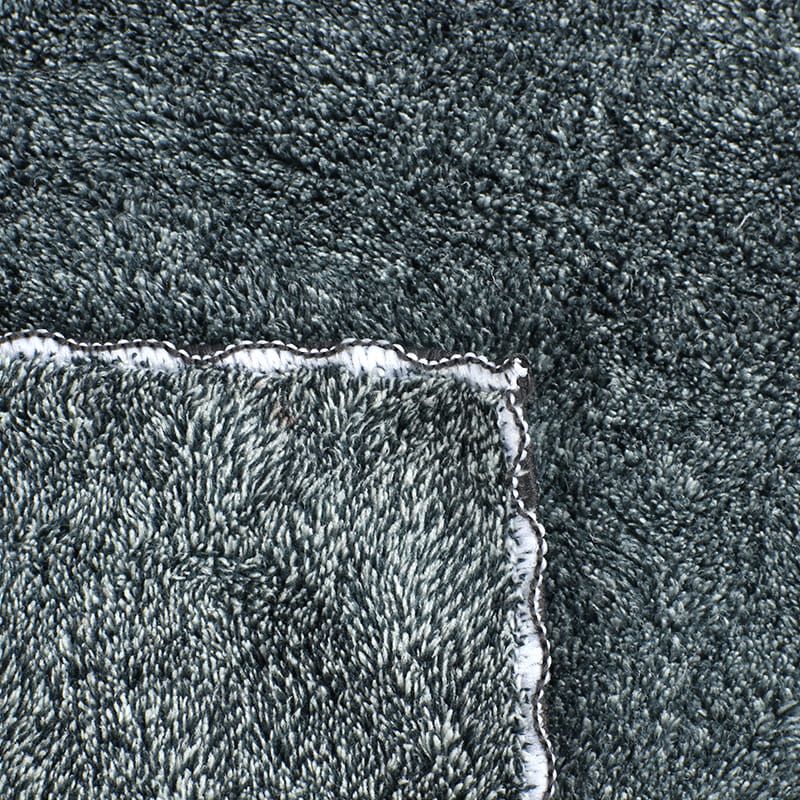We are a national high-tech enterprise. At present, there are many kinds of self-woven and cooperatively processed fabrics, including microfiber warp-knitted towel cloth, weft-knitted towel cloth, coral fleece, etc.
Material Composition: When selecting kitchen cleaning towels, prioritize materials known for their antimicrobial properties. Microfiber stands out due to its densely woven structure of synthetic fibers (typically polyester or a blend), which inherently discourages the growth of bacteria. This material's fine fibers create a less hospitable environment for microbial organisms compared to natural fibers like cotton. Consider towels treated with antimicrobial agents during manufacturing. These treatments, such as silver nanoparticles or copper compounds, are integrated into the fabric to inhibit bacterial growth on the towel's surface, ensuring prolonged freshness and hygiene.
Antimicrobial Treatment: Verify if the towels feature specific antimicrobial treatments. Manufacturers often apply these treatments to textiles to enhance their ability to resist bacteria. Antimicrobial finishes work by disrupting the cell membranes of bacteria that come into contact with the towel, thereby inhibiting their growth and reducing odor buildup. Some towels may utilize advanced technologies that embed antimicrobial agents directly into the fabric fibers, ensuring long-lasting protection wash after wash. Look for towels that explicitly mention their antimicrobial properties and check for supporting certifications or test results to validate these claims.
Absorbency and Quick Drying: Effective kitchen cleaning towels should be highly absorbent and quick-drying. Microfiber towels excel in these areas due to their capillary action, which allows them to absorb moisture rapidly and efficiently. This feature not only enhances their cleaning performance but also minimizes the moisture retained within the fabric after use. Since bacteria thrive in moist environments, choosing towels that dry quickly helps prevent bacterial proliferation and the associated unpleasant odors. Evaluate towels based on their absorbency ratings and drying times, ensuring they meet the demands of frequent kitchen use without compromising hygiene.
Texture and Weave: Opt for towels with a smooth, tightly woven texture. Smooth surfaces are less conducive to bacteria attachment compared to rough or textured fabrics, reducing the likelihood of microbial buildup over time. Dense weaves further enhance this effect by minimizing gaps where bacteria could settle and multiply. Consider towels with a consistent weave pattern that promotes durability and easy maintenance. High-quality kitchen towels often feature reinforced edges or hemming to prevent fraying, ensuring long-term usability in demanding kitchen environments.
Odor Resistance: Look for towels engineered specifically for odor resistance. Innovative technologies may incorporate materials or treatments that actively repel odors caused by bacterial growth. For instance, some towels use activated charcoal or specialized coatings that neutralize odors on contact, keeping the towel fresh between washes. Evaluate product descriptions and user reviews to gauge how effectively towels maintain their odor-resistant properties over time, particularly under regular use conditions in the kitchen.
Washing Instructions: Proper care ensures that antimicrobial treatments remain intact and continue to inhibit bacterial growth effectively. Wash towels at appropriate temperatures using mild detergents, avoiding bleach or harsh chemicals that could compromise antimicrobial finishes. Regular laundering not only removes dirt and debris but also refreshes the towel's absorbency and odor-resisting capabilities, preserving its functionality over time.
Antibacterial gypsophila bath towel


 English
English Espaol
Espaol русский
русский عربي
عربي 简体中文
简体中文
















